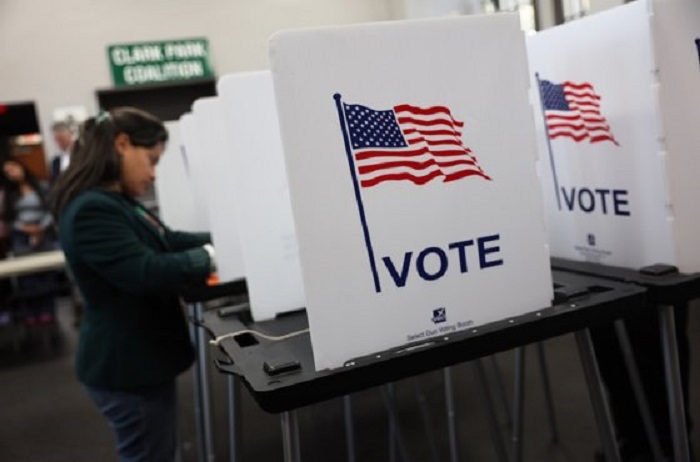Election certification is a crucial step in finalizing the results of U.S. elections. After voters cast their ballots and the votes are counted, the certification process ensures that the results are accurate and legally recognized. This process begins at the local level, where election officials verify the ballots and count the votes. Once verified, the results are sent to state authorities, who review and certify them before the final results are made public.
Certification can take several weeks, as it involves addressing potential discrepancies, counting absentee ballots, and handling any legal challenges. The certification process is essential for maintaining the integrity of the election and ensuring that all votes are correctly accounted for. In this article, we’ll explore when elections are certified, why certification is necessary, and how the entire process works. We’ll also examine common challenges that may arise during election certification.
When is the election certified?
Election results are certified after the votes are counted and verified. In most U.S. elections, certification happens a few weeks after Election Day. This process typically begins at the local level, where election boards verify the results and address any potential discrepancies. After local certification, the state then finalizes the results. Certification ensures that the election results are legally valid and officially recognized.
The Steps Involved in Certifying Election Results
The election certification process is a critical step in finalizing the results of an election. It begins with the local authorities, who verify the vote totals and address any irregularities, such as discrepancies in vote counting or issues with absentee ballots. Once local officials confirm the accuracy of the vote count, the results are sent to the state authorities for official certification.
At the state level, the certification process ensures that the election results are valid and legally recognized. This is when the final winner is declared. In some instances, the certification process may face delays due to recounts, legal challenges, or complications in counting absentee or provisional ballots. However, these delays are uncommon and typically resolve within a few weeks.
Certification generally takes place within a few weeks after Election Day, providing time for all the necessary checks to be completed. This process is vital for maintaining the accuracy, integrity, and transparency of the election results. Much like how the Time America Watch keeps track of time, the certification process ensures a smooth, timely, and legally binding conclusion to the election.
When Does the Certification of Election Results Occur?
This section will provide a detailed breakdown of the election certification timeline, explaining when certification typically occurs after Election Day. We will highlight the key dates in the election certification process, including:
- Local Certification: The initial step in the certification process is when local election boards verify vote counts and handle absentee ballots.
- State Certification: The final step is when the state reviews and certifies the election results.
- Certification Deadlines: We’ll explain the deadlines for certification, typically 2-4 weeks after Election Day, and how these timelines can impact election outcomes.
This section will help readers understand the timing of election certification and the factors that may delay or speed up the process.
The Role of Local and State Authorities in Election Certification
In the election certification process, local and state authorities play a crucial role in ensuring that the results are accurate, legally valid, and publicly recognized. Local election boards, clerks, and state officials collaborate to review, verify, and finalize the election outcomes. Here’s a breakdown of their responsibilities:
- Local Election Boards: These boards are responsible for counting all ballots, including absentee, early voting, and in-person votes. They ensure that all votes are correctly recorded and verified, addressing any discrepancies or issues that may arise.
- State Election Authorities: Once local results are confirmed, state officials conduct the final review and certify the results. State authorities ensure that all legal requirements are met and that the results are legally binding.
Additionally, these authorities handle any disputes or irregularities that may arise during the certification process. If issues such as voter fraud, miscounted ballots, or discrepancies arise, legal mechanisms are in place to resolve them, ensuring the process remains fair and transparent. This collaborative effort maintains the integrity of the election and ensures a smooth transition of power.
Challenges to Election Certification: Legal Issues and Disputes
In this section, we will discuss potential challenges to the certification process. These challenges can arise for several reasons, including disputes over vote counts, allegations of voter fraud, or issues with absentee ballots. We will explain:
- Recounts: When a recount is triggered and how it affects the certification process.
- Election Fraud Allegations: How election fraud claims are handled and their impact on certification.
- Legal Challenges: The role of courts in resolving disputes during the certification process and how this can delay finalizing the results.
Understanding these challenges is essential for recognizing the complexities of the certification process and how legal actions can affect the outcome of an election. Much like how the Invisible Text Generator works in the background to reveal hidden content, challenges during the certification process often involve unseen legal complexities that can alter the election outcome.
Why is Election Certification Important?
Election certification is a crucial step in ensuring that the results of an election are accurate, legally valid, and recognized. It plays a significant role in maintaining the integrity of the democratic process.
Legal Confirmation
Election certification plays a critical role in confirming the results as legally valid. Once the certification process is completed, it legally declares the winner of the election, ensuring that the results are accurate and reflect the will of the voters. Without certification, the election results would not be officially recognized, and there could be uncertainty about the outcome.
Maintaining Public Trust
Certification is vital for maintaining public confidence in the election process. By confirming the results through a transparent and rigorous process, certification ensures that the election was conducted fairly and that no manipulation or errors occurred. This fosters trust among voters and ensures the legitimacy of the democratic process.
Finalizing Election Results
Once election results are certified, the winners are officially declared, and the transition of power can take place. Certification finalizes the election process, making the results legally binding. This step is crucial for upholding the integrity of the election and ensuring that the democratic process remains intact and respected.
In Closing
Election certification is a vital step in the election process, ensuring that results are legally verified, accurate, and publicly recognized. It provides a final confirmation of the winner and guarantees the legitimacy of the election. Typically occurring within a few weeks after Election Day, the certification process can be influenced by factors such as legal challenges, recounts, and disputes. These elements may cause delays, but they are essential for ensuring that the election results reflect the will of the people. Understanding when elections are certified and the steps involved helps preserve the integrity of the democratic process, ensuring that elections remain fair, transparent, and legally binding.
FAQ’s
When does election certification take place?
Election certification typically occurs a few weeks after Election Day, once all votes are counted, absentee ballots are verified, and any disputes or legal challenges are addressed.
Who certifies election results?
Local election boards initially verify the results, and state election authorities finalize the certification at the state level.
Can election results be changed after certification?
In rare cases, results may be changed if recounts or legal challenges alter the vote count, but certification is generally the final step in the election process.
Why is election certification necessary?
Election certification ensures the results are legally valid, maintains public trust in the democratic process, and officially declares the winners of the election.
What happens if there’s a delay in certification?
Delays in certification can occur due to recounts, legal challenges, or disputes, but these delays are rare and generally resolve before the transition of power takes place.













Leave a Reply